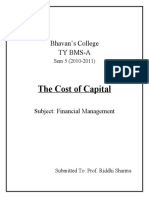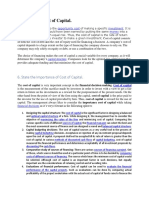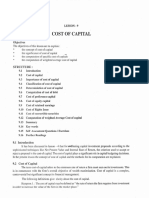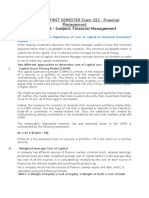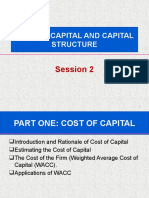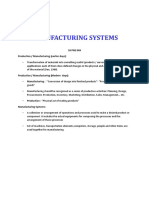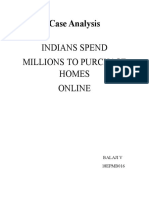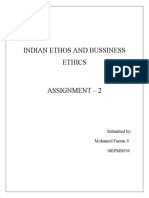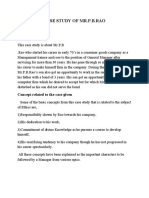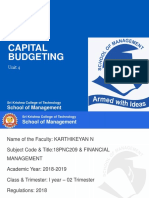0% found this document useful (0 votes)
49 views75 pagesUnit 3 - Capital Structure-2
This document contains notes from a lecture on capital structure and cost of capital. It defines cost of capital as the minimum rate of return that a firm must earn on its overall capital in order to maintain its market value. It discusses how to calculate the weighted average cost of capital (WACC) and outlines the steps involved. It also introduces several capital structure theories that will be covered in the next session.
Uploaded by
Farshan SulaimanCopyright
© © All Rights Reserved
We take content rights seriously. If you suspect this is your content, claim it here.
Available Formats
Download as PDF, TXT or read online on Scribd
0% found this document useful (0 votes)
49 views75 pagesUnit 3 - Capital Structure-2
This document contains notes from a lecture on capital structure and cost of capital. It defines cost of capital as the minimum rate of return that a firm must earn on its overall capital in order to maintain its market value. It discusses how to calculate the weighted average cost of capital (WACC) and outlines the steps involved. It also introduces several capital structure theories that will be covered in the next session.
Uploaded by
Farshan SulaimanCopyright
© © All Rights Reserved
We take content rights seriously. If you suspect this is your content, claim it here.
Available Formats
Download as PDF, TXT or read online on Scribd
/ 75















